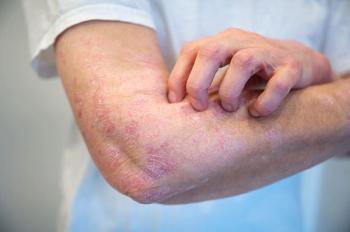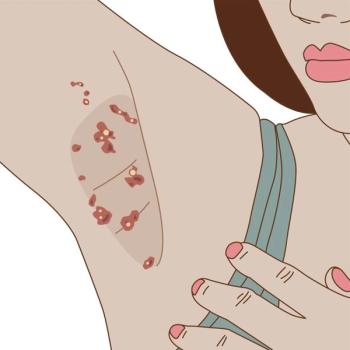
Secondary Syphilis and HIV Positivity
Six months after testing positive for HIV in 10 bands, a 24-year-old homosexual man presented with a macular rash on his palms and soles. He first noticed the lesions 2 weeks earlier; they were not pruritic or painful. He also had a brighter, more inflamed rash in the groin and antecubital fossae that was presumed to be a yeast infection and was treated with fluconazole. He had no other symptoms.
Six months after testing positive for HIV in 10 bands, a 24-year-old homosexual man presented with a macular rash on his palms and soles. He first noticed the lesions 2 weeks earlier; they were not pruritic or painful. He also had a brighter, more inflamed rash in the groin and antecubital fossae that was presumed to be a yeast infection and was treated with fluconazole. He had no other symptoms.
The patient had tonsillitis 2 and a half years earlier. For the past 2 years, he had been taking atomoxetine for attention deficit disorder. A few months before presentation, he complained of fatigue secondary to stress and bupropion was prescribed.
The patient's history and the clinical appearance of the rash suggested secondary syphilis. Results of a rapid plasma reagin test were positive (titer of 1:128).
The skin eruption is characteristic of secondary syphilis. Because numerous conditions are associated with macular lesions on the palms and soles-including erythema multiforme and Rocky Mountain spotted fever-syphilis is often called the "great imitator."
This patient was referred to a county health department for treatment.
Newsletter
Enhance your clinical practice with the Patient Care newsletter, offering the latest evidence-based guidelines, diagnostic insights, and treatment strategies for primary care physicians.






























































































































































































































































































































